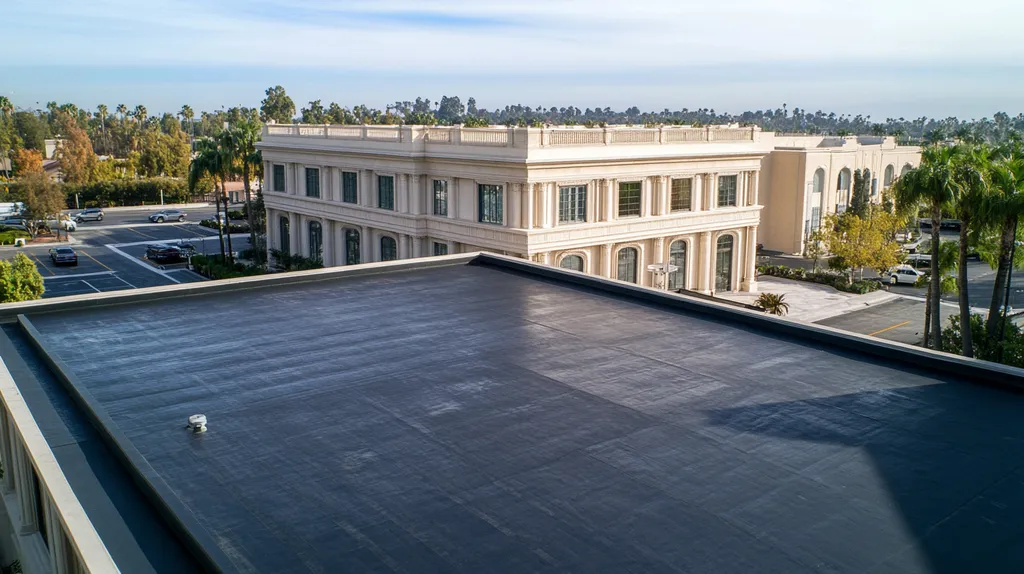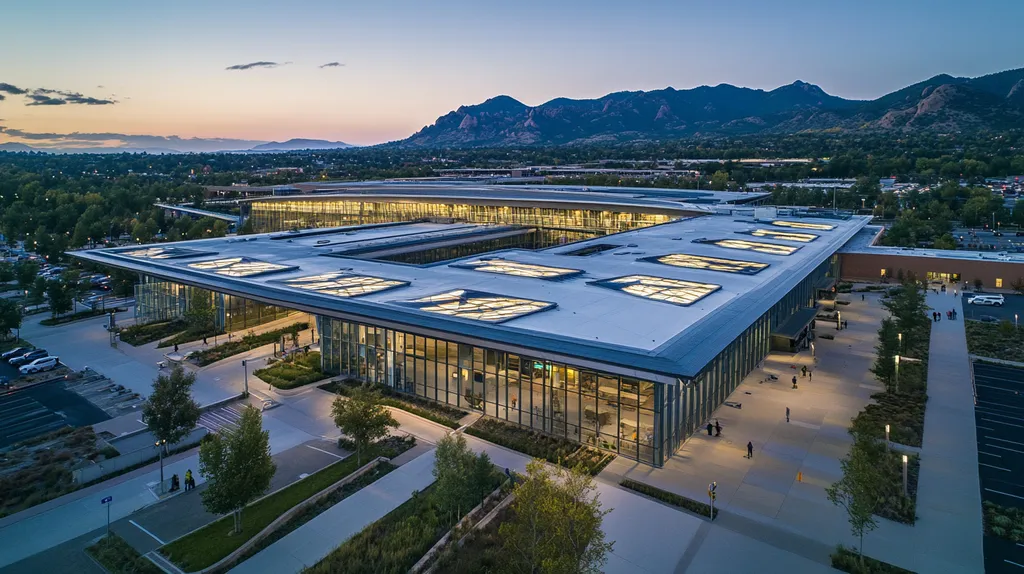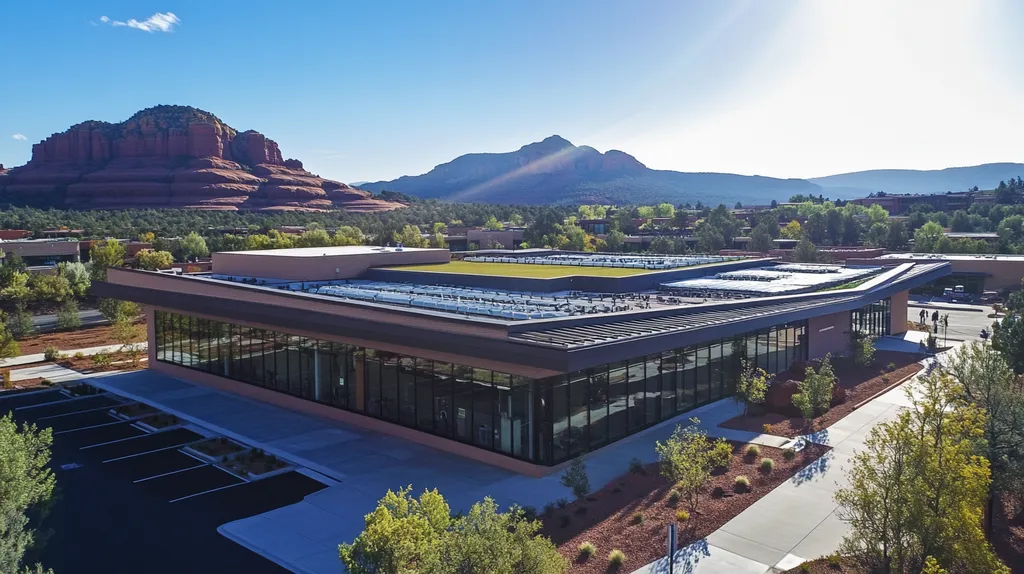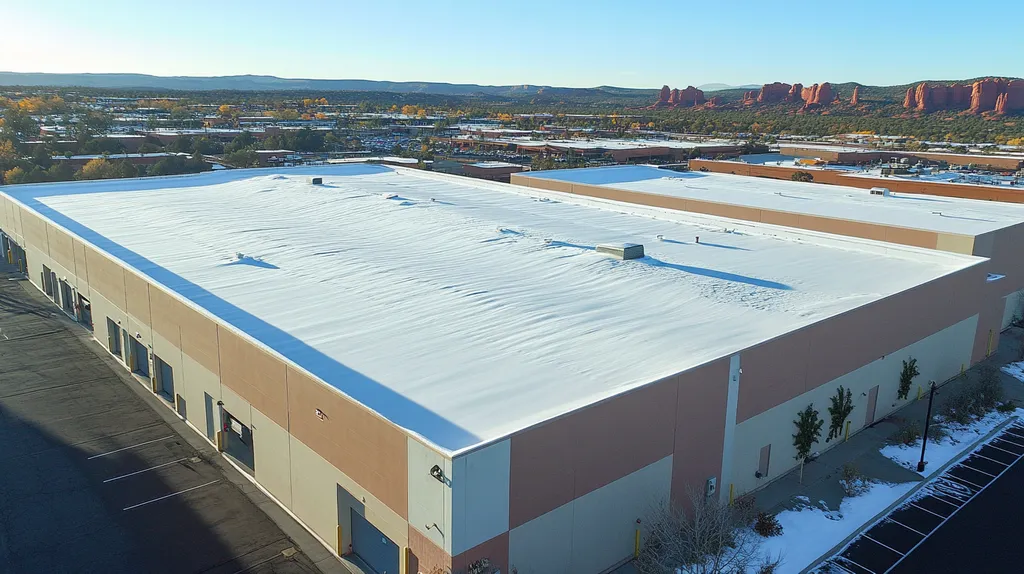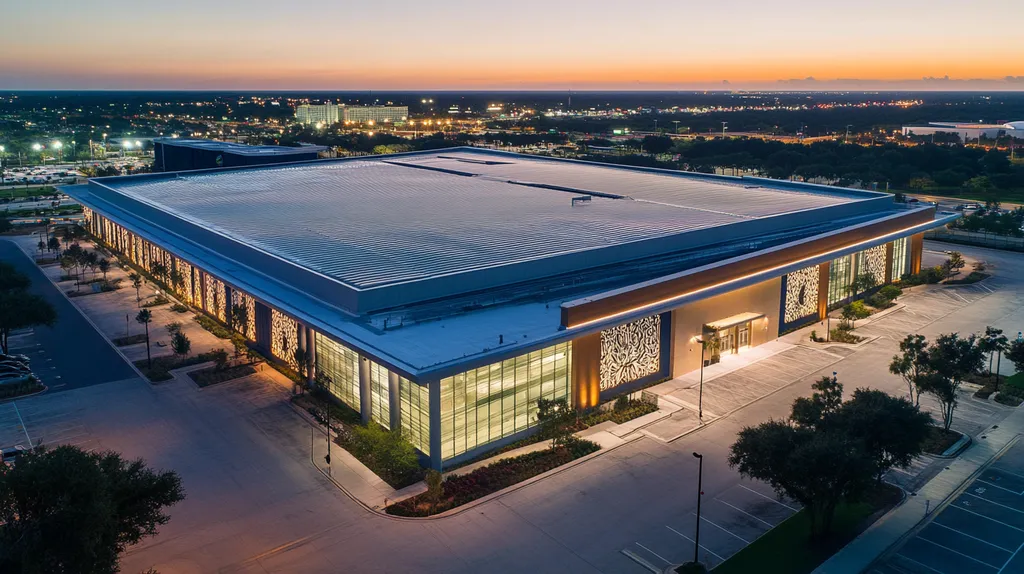Welcome to today’s Battle Royale featuring two roofing heavyweights: “Drone Inspections” in the east corner versus “Manual Inspections” in the west!
Tonight’s showdown pits these contenders against each other across six punishing rounds designed to test every aspect of their performance for Commercial Roof Maintenance.
At stake? Millions in potential costs, decades of building protection, and the critical performance demands of modern commercial and industrial facilities.
Our professional judging panel will evaluate each round on technical merit, real-world performance, and value delivery. After all six rounds, we’ll declare our ultimate champion.
Ladies and gentlemen, facility managers and building owners… it’s time to rumble!
ROUND 1: INITIAL COSTS & INSTALLATION
When it comes to commercial roof inspections, the financial implications of choosing the wrong method can be severe. Industry data shows that delayed or inadequate roof inspections lead to repairs costing 3-4 times more than preventive maintenance. With commercial buildings averaging 20,000 square feet of roof area, property managers must carefully evaluate the initial investment and setup requirements of different inspection approaches.
Material Expenses
The material costs for drone inspections primarily center on the drone unit itself, along with specialized cameras and sensors. While commercial-grade inspection drones can cost between $5,000-$15,000, this investment typically pays for itself within the first year through reduced labor and equipment needs.
Manual inspections require ongoing investments in safety equipment, including harnesses, tie-offs, and ladders. For buildings over three stories, additional equipment like lifts or scaffolding becomes necessary, dramatically increasing costs.
When comparing long-term material expenses, drone inspections offer substantial savings through reusable technology and minimal additional equipment needs. This earns drones the clear “ADVANTAGE” in material expenses.
Installation Complexity
Drone inspection setup primarily involves pre-flight checks, calibration, and establishing a safe flight path. Most commercial roofs can be prepared for drone inspection within 30 minutes, requiring only minimal ground crew support.
Manual inspection preparation demands extensive safety protocols, including anchor point verification, equipment testing, and creating safe access routes. These requirements often necessitate multiple crew members and several hours of setup time.
For buildings with complex architectural features or multiple roof levels, manual setup complexity increases exponentially. The straightforward nature of drone deployment makes it the clear winner, earning the “ADVANTAGE” in this category.
Project Timeline
Drone inspections can typically complete a thorough survey of a 20,000-square-foot roof in under two hours. This includes capturing high-resolution imagery and thermal scans of the entire surface, with data ready for analysis the same day.
Manual inspections of the same area often require 1-2 full working days to complete. This timeline extends further when dealing with multiple roof sections or when weather conditions limit access.
The efficiency and speed of drone inspections make them the superior choice for maintaining project schedules and minimizing disruption to building operations. This gives drones the clear “ADVANTAGE” in project timeline considerations.
ROUND 1 WINNER: Drone Inspections
ROUND 2: DURABILITY & LIFESPAN
Commercial roof durability directly impacts business continuity and operational costs. Research indicates that systematic inspection programs can extend a roof’s functional lifespan by 5-10 years, while missed maintenance can lead to premature failure. For facilities averaging 20,000 square feet of roof area, choosing the right inspection method becomes crucial for protecting this vital building asset.
Impact on Material Integrity
Drone inspections utilize high-resolution cameras and thermal imaging to detect early signs of deterioration, including moisture infiltration, membrane separation, and structural stress points. This technology can identify issues before they become visible to the naked eye, allowing for preventive intervention.
These systems can create detailed surface maps showing variations in temperature and material condition across the entire roof structure. Regular drone monitoring helps track changes over time, enabling data-driven maintenance decisions.
Manual inspections rely heavily on visual observation and physical contact, which can actually damage sensitive roofing materials. Walking on roof surfaces creates wear patterns and potential weak points, particularly on older membranes.
With superior detection capabilities and minimal physical impact, drone inspections earn a clear ADVANTAGE in protecting material integrity.
Long-Term Cost Efficiency
Drone inspections enable frequent, comprehensive evaluations without additional wear on roofing materials. The consistency of automated scanning helps identify patterns and predict potential failure points before they develop into costly repairs.
The digital documentation created by drone systems provides trackable evidence of roof condition over time. This data helps optimize maintenance schedules and validate warranty claims when needed.
Manual inspections often result in inconsistent documentation and missed problems due to human factors like fatigue or limited visibility. These oversights typically lead to more extensive repairs and shortened roof life.
The systematic approach and superior documentation of drone inspections earn them the ADVANTAGE in long-term cost efficiency.
Increased Maintenance Longevity
Drone technology allows for precise, repeatable inspection routes that ensure consistent coverage of all roof areas. This standardization helps maintenance teams track changes accurately and address emerging issues promptly.
The ability to safely inspect during marginal weather conditions means more frequent monitoring opportunities. More regular inspections lead to better-timed maintenance interventions that extend overall roof life.
Manual inspections often face weather-related delays and safety restrictions that reduce inspection frequency. These limitations can result in longer intervals between checks and missed maintenance windows.
The superior monitoring capabilities and inspection consistency give drone inspections the ADVANTAGE in maintenance longevity.
ROUND 2 WINNER: DRONE INSPECTIONS
ROUND 3: PERFORMANCE FACTORS
In commercial roofing, inspection performance directly impacts building protection and operational costs. Studies show that undetected roof issues can escalate repair costs by 500% when left unchecked. For facility managers overseeing vast roof spaces, the difference between thorough and incomplete inspections can mean hundreds of thousands in unexpected repairs.
Accuracy of Inspections
Each type of roof inspection demands different levels of scrutiny, from checking fastener installations to evaluating membrane conditions. Common issues like improper fastener placement and damaged edges require systematic evaluation following manufacturer guidelines. (source: Procore)
Drone inspections utilize advanced imaging technology including thermal sensors to detect hidden moisture infiltration and material degradation. These systems can map entire roof surfaces with millimeter precision, creating detailed documentation of potential problem areas.
Manual inspections rely heavily on visual assessment and physical contact, which can miss subtle defects hidden beneath the surface. Human factors like fatigue and limited visibility can lead to oversight of critical issues.
The comprehensive detection capabilities and consistent documentation make drone inspections the clear ADVANTAGE holder in accuracy.
Efficiency of Time
Time efficiency in roof inspections directly impacts building operations and maintenance schedules. Modern commercial facilities cannot afford extended downtime for routine inspections.
Drone systems can complete thorough inspections of large roof areas in hours rather than days. Their automated flight patterns ensure consistent coverage while minimizing disruption to building operations.
Traditional manual inspections require extensive setup time and often face delays due to weather conditions or safety concerns. These inspections typically demand multiple visits to complete comprehensive assessments.
The superior speed and reliability of drone inspections earn them the ADVANTAGE in time efficiency.
Safety Considerations
Roof inspection safety impacts both personnel wellbeing and liability exposure. Fall protection requirements and OSHA regulations make traditional inspection methods increasingly complex.
Drone inspections eliminate the need for workers to access dangerous roof areas. They can safely examine high-risk zones and difficult-to-reach sections without compromising inspection quality.
Manual inspections require workers to navigate potentially hazardous conditions, especially on aging or damaged roofs. Weather conditions and structural uncertainties create additional safety risks.
The significant reduction in personnel exposure makes drone inspections the clear ADVANTAGE holder in safety considerations.
ROUND 3 WINNER: DRONE INSPECTIONS
ROUND 4: MAINTENANCE REQUIREMENTS
The long-term success of commercial roofing systems hinges on effective maintenance strategies. Industry data shows that properly maintained roofs can last 21 years or longer, while neglected systems often fail in less than 10 years. For facility managers overseeing substantial roof assets, choosing the right inspection approach dramatically impacts both maintenance effectiveness and overall building protection.
Inspection Frequency and Coverage
Comprehensive roof inspections must balance thoroughness with practical execution. Regular monitoring helps identify potential issues before they escalate into major problems requiring costly repairs.
Drone inspections can systematically cover large roof areas multiple times per year, using thermal imaging to detect hidden moisture infiltration and material degradation that might be invisible to the naked eye. (source: Procore)
Manual inspections typically occur less frequently due to labor constraints and weather limitations. Physical access restrictions often result in some areas receiving less thorough examination, particularly on complex roof designs.
The superior coverage and increased inspection frequency capability gives drone inspections the clear ADVANTAGE in this category.
Data Management and Analysis
Modern roof maintenance demands sophisticated tracking of condition changes over time. Effective data management enables predictive maintenance strategies that can prevent major failures.
Drone systems automatically generate detailed digital records including thermal mapping, surface deterioration, and historical comparisons. This standardized data collection creates consistent, searchable documentation for maintenance planning.
Traditional manual inspections rely heavily on individual inspector documentation methods, leading to inconsistent records and potential gaps in condition tracking. This variation makes long-term analysis more challenging.
The systematic data collection and analysis capabilities make drone inspections the clear ADVANTAGE holder.
Resource Requirements
Maintaining an effective inspection program requires careful allocation of personnel and equipment. Resource optimization directly impacts both inspection quality and operational costs.
Drone inspections minimize ongoing resource needs, requiring only a certified operator and support technician. Equipment maintenance focuses on the drone system itself, with minimal additional resource requirements.
Manual inspections demand continuous investment in safety equipment, multiple inspection personnel, and access equipment like lifts or scaffolding. These resource requirements often limit inspection frequency and thoroughness.
The efficient use of resources and reduced personnel requirements gives drone inspections the ADVANTAGE in this category.
ROUND 4 WINNER: DRONE INSPECTIONS
ROUND 5: SUSTAINABILITY CREDENTIALS
Environmental impact has become a crucial factor in facilities management decisions, with mounting pressure to reduce carbon footprints across all operations. For commercial properties averaging 20,000 square feet of roof area, inspection methods can significantly influence sustainability metrics. Research indicates that inefficient maintenance practices can increase a building’s environmental impact by up to 30% through unnecessary material waste and increased energy consumption.
Waste Reduction
Commercial roof inspections must minimize material waste to meet increasingly stringent environmental standards. Regular inspections help detect issues early to prevent costly repairs and reduce material disposal. (source: Travelers Insurance)
Drone inspections generate virtually no physical waste during the inspection process. Their non-contact approach prevents damage to roof surfaces that often occurs during manual inspections, reducing the need for repairs and material replacement.
Manual inspections frequently result in damaged materials from foot traffic and equipment placement. This damage often requires replacement materials and generates additional waste through premature repairs.
The minimal physical impact and waste reduction potential give drone inspections the clear ADVANTAGE in this category.
Energy Consumption
Energy efficiency during inspection processes directly impacts a facility’s environmental footprint. Modern sustainability standards demand consideration of both direct and indirect energy usage in maintenance operations.
Drone inspections require minimal energy input, typically operating on rechargeable batteries. They complete comprehensive surveys quickly, reducing the overall energy demands of the inspection process.
Traditional manual inspections often require power equipment, multiple vehicle trips, and extended operation times. These factors significantly increase the energy consumption associated with each inspection cycle.
The superior energy efficiency of drone operations earns them the ADVANTAGE in this category.
Carbon Footprint
The carbon impact of inspection methods has become increasingly important as organizations work to meet environmental targets. Each inspection choice carries different implications for greenhouse gas emissions and environmental responsibility.
Drone inspections minimize carbon emissions through reduced transportation needs and efficient operation. Their ability to cover large areas quickly means fewer site visits and lower overall emissions.
Manual inspections typically involve multiple vehicle trips, heavy equipment operation, and extended on-site presence. These factors contribute to a substantially larger carbon footprint per inspection cycle.
The significantly lower emissions profile gives drone inspections the ADVANTAGE in carbon footprint considerations.
ROUND 5 WINNER: DRONE INSPECTIONS
ROUND 6: SPECIALIZED APPLICATIONS
Commercial roof inspection methods must evolve to meet increasingly complex building requirements. Industry data shows that specialized applications like moisture detection and thermal analysis can reduce repair costs by up to 70% when implemented early. For facilities with extensive roofing systems, selecting the right inspection approach for these specialized needs can mean the difference between proactive maintenance and catastrophic failure.
Advanced Detection Capabilities
Modern commercial roofs require sophisticated inspection techniques to identify potential problems before they become visible. Infrared scans and moisture detection systems can reveal hidden issues that threaten roof integrity long before surface damage appears. (source: Procore)
Drone inspections utilize multi-spectral imaging and thermal sensors to create comprehensive moisture maps of entire roof surfaces. These systems can detect temperature variations and moisture infiltration patterns with millimeter precision, even in areas difficult to access physically.
Manual inspections rely primarily on visual assessment and spot checks, limiting their ability to detect subsurface issues. Even experienced inspectors can miss early signs of moisture infiltration when relying solely on visible indicators.
The superior detection capabilities and comprehensive coverage give drone inspections the clear ADVANTAGE in this category.
Environmental Adaptability
Commercial roof inspections must function effectively across varying weather conditions and seasonal changes. Consistent monitoring regardless of environmental factors is crucial for maintaining roof integrity.
Drone systems can operate in low-light conditions and capture accurate data during temperature transitions when moisture issues are most visible. Their automated flight patterns ensure consistent coverage regardless of environmental challenges.
Traditional manual inspections often face limitations during adverse weather conditions or extreme temperatures. These restrictions can lead to delayed or incomplete inspections when timing is critical.
The superior environmental adaptability and consistent performance give drone inspections the ADVANTAGE in this category.
Complex Structure Assessment
Modern commercial buildings often feature intricate roof designs with multiple levels, mechanical systems, and architectural features. These complex structures demand thorough inspection of all components and transitions.
Drone inspections excel at capturing detailed imagery of complex roof features from multiple angles. Their ability to safely navigate around obstacles and access difficult corners ensures complete coverage of all structural elements.
Manual inspections of complex structures often require multiple access points and specialized equipment. Some areas may remain partially or completely inaccessible, creating potential blind spots in the inspection process.
The comprehensive coverage and superior maneuverability give drone inspections the ADVANTAGE in assessing complex structures.
ROUND 6 WINNER: DRONE INSPECTIONS
AND THE WINNER IS…
Ladies and gentlemen, after six grueling rounds of technical analysis, we have an undisputed champion! With a clean sweep across all categories, DRONE INSPECTIONS has dominated this matchup!
The victor showcased superior performance in cost efficiency, durability protection, safety enhancement, maintenance optimization, sustainability credentials, and specialized detection capabilities. This technological powerhouse proved particularly devastating in Round 3’s Performance Factors and Round 6’s Advanced Detection showdown.
But don’t count Manual Inspections out completely! This traditional contender still proves valuable for smaller buildings under three stories, facilities requiring hands-on material testing, or situations demanding immediate emergency assessment when drone deployment isn’t practical.
Remember, folks: Every commercial property brings its own unique challenges to the ring. Local regulations, weather patterns, and specific building characteristics can all impact inspection strategy effectiveness. While drone technology has claimed today’s title, your facility’s specific requirements should ultimately determine the right inspection approach.
Property owners and facility managers should always consult qualified roofing professionals who can evaluate their specific situation and recommend the most appropriate inspection method for their needs.
And there you have it, champions! In the high-stakes world of commercial roof maintenance, the key to victory isn’t just picking the reigning champion – it’s matching your building’s specific requirements with the right inspection contender’s strengths!
FREQUENTLY ASKED QUESTIONS
Q. What are the initial costs of commercial roof inspections?
A. The initial costs for commercial roof inspections can vary significantly based on the method chosen. Drone inspections typically involve a one-time investment in technology, whereas manual inspections require ongoing expenses for safety equipment and labor over time. Overall, drones may offer a better long-term financial solution due to reduced operational costs.
Q. How do drone inspections improve lifespan of industrial roofs?
A. Drone inspections enhance the lifespan of industrial roofs by providing advanced technology for early detection of deterioration. This means potential issues can be addressed before they escalate, significantly extending the roof’s functional life. Regular monitoring through drones ensures that maintenance is timely and effective.
Q. What factors impact performance in commercial roof inspections?
A. Performance in roof inspections hinges on accuracy, efficiency, and safety. Drones provide high precision and speed, allowing for thorough inspections without compromising safety. Traditional methods may struggle with visibility and require more time, which can impact the overall effectiveness of the inspection.
Q. How does inspection method affect maintenance requirements?
A. The method of inspection directly influences maintenance requirements for commercial roofs. Drone inspections can be performed more frequently due to their efficiency, leading to proactive maintenance. In contrast, manual inspections may result in infrequent monitoring, leaving potential issues undetected until they require extensive repairs.
Q. What sustainability benefits do drone inspections provide?
A. Drone inspections contribute to sustainability by reducing waste and energy consumption. They use minimal physical resources and their efficient nature leads to fewer required inspections. This lowers overall environmental impact, making them a responsible choice for modern facilities management.
Q. How do drones enhance specialized applications in roof inspections?
A. Drones improve specialized applications like moisture detection and thermal analysis by utilizing advanced imaging technology. They can identify hidden issues with high precision and create detailed maps, facilitating a proactive approach to maintenance that traditional inspections simply cannot achieve.
Q. What should property managers prioritize in roof inspections?
A. Property managers should prioritize accuracy, efficiency, and safety in roof inspections. Choosing a method that addresses these factors will ensure timely maintenance, reduce unexpected repair costs, and enhance the overall safety of personnel involved. Regular assessments are crucial for effective roof management.

